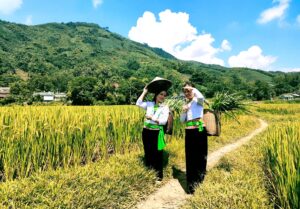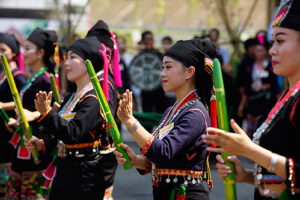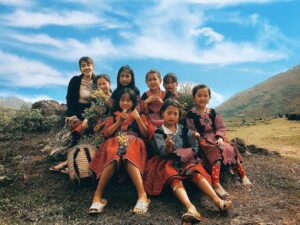Exploring the Cultural Heritage of the Xinh Mun Ethnic Group in Vietnam’s Northwest
The Xinh Mun ethnic group, residing in Vietnam’s Northwest, is known for its unique cultural traditions, including distinctive clothing and traditional stilt houses. Their vibrant festivals and intricate embroidery reflect a rich heritage that has been preserved for generations. The Xinh Mun people’s way of life remains a vital part of the region’s cultural diversity.
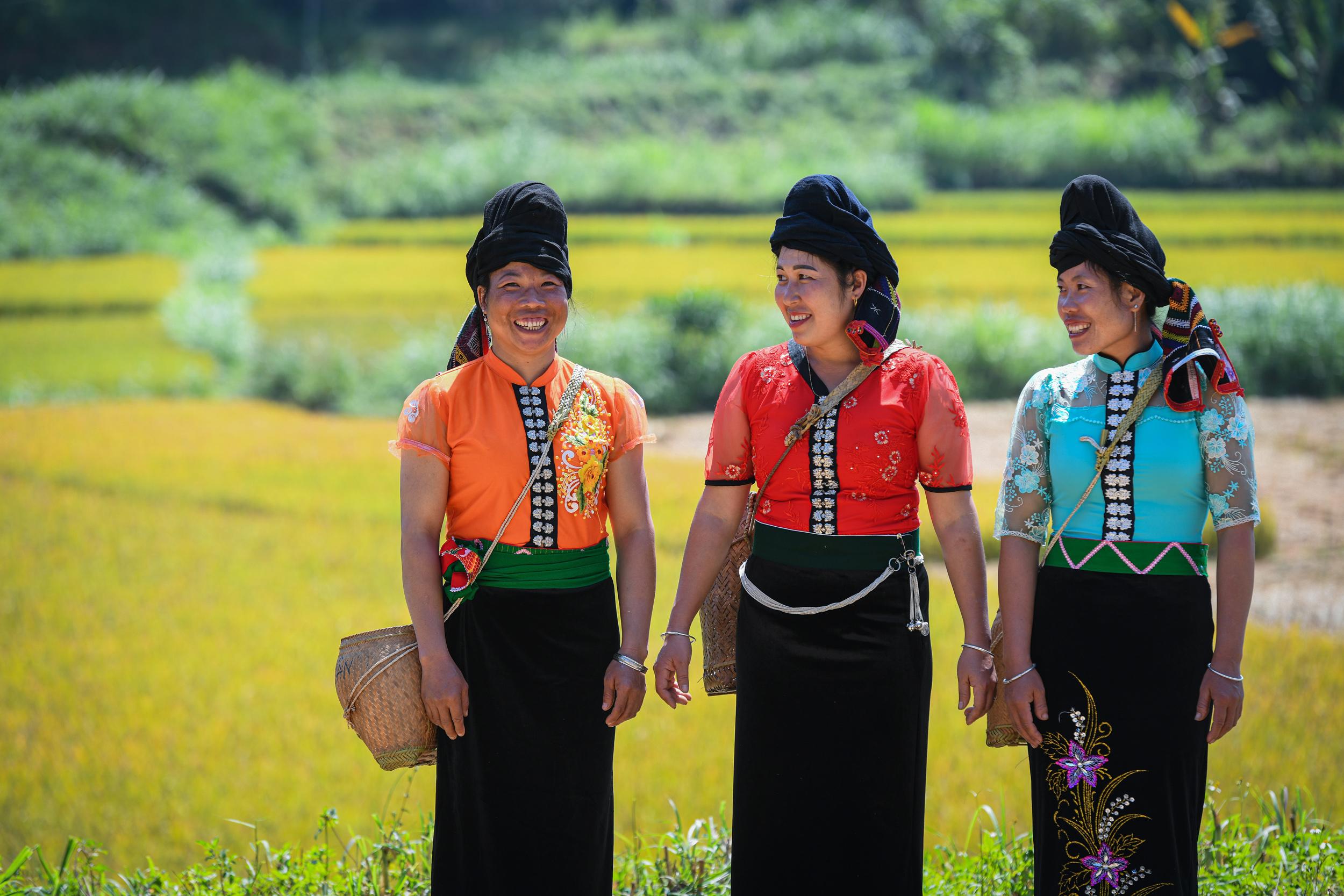
Origins of the Xinh Mun Ethnic Group
In the history of Vietnam, there are not many records about the Xinh Mun ethnic group. However, scientists agree that this group originates from the Northwest region of Vietnam. Some other evidence suggests that the Xinh Mun is one of the oldest and earliest ethnic groups in Son La in particular and the Northwest region in general.
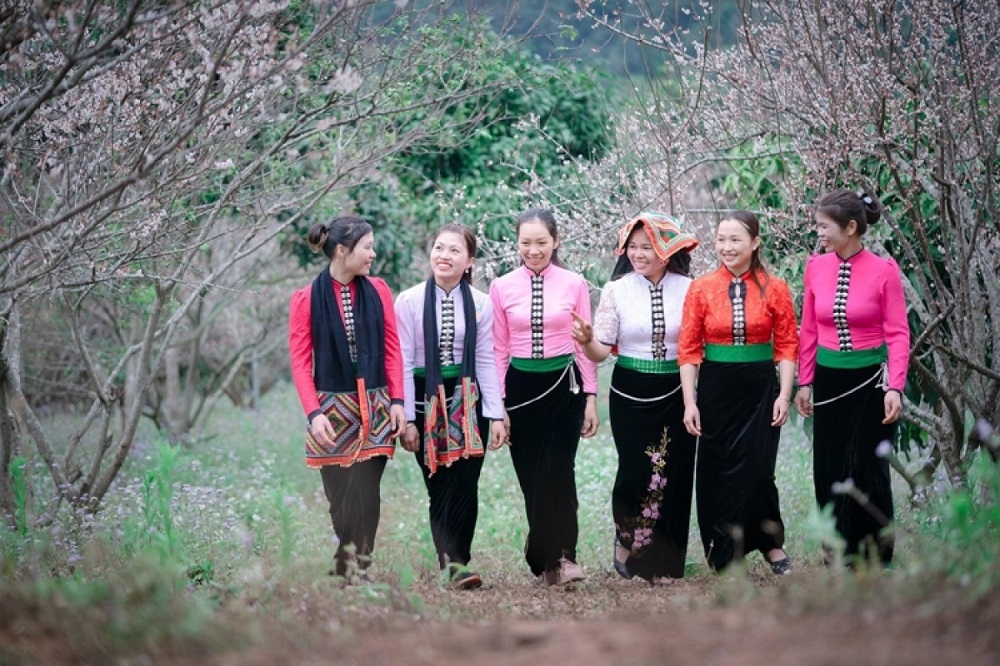
The Xinh Mun people, with their traditional headscarves, white shirts, and black skirts, are among the oldest ethnic minorities in the Northwest region.
Explanation of the Name of the Xinh Mun Ethnic Group
The name “Xinh Mun,” chosen as the official name of this ethnic group, is derived from the term “K’xing Mul,” which means “People of the Mountain.” Additionally, this ethnic group has had other names, such as Xa, Puoc, or Xa Puoc, during the feudal period when they fought against the French. These names represented enslaved people who were considered to be at the bottom of the social hierarchy. The Thai people in Moc Chau refer to the Xinh Mun people as “Phu Puoc,” meaning “People of the Termite.” To align with the Vietnamese writing system and facilitate naming, the official list of ethnic minorities in Vietnam, published by the General Statistics Office in 1979, selected “Xinh Mun” as the official ethnic name.
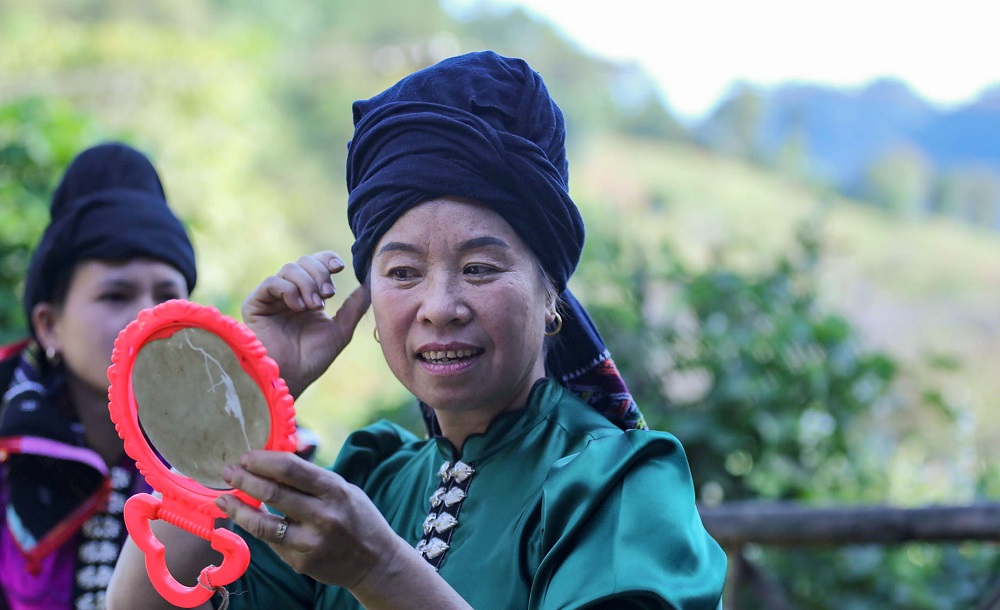
Cultural and Spiritual Life
The Xinh Mun people live in units called “ban,” with no larger or smaller geographical units. In the past, each ban had only about 10 households, but thanks to the government’s resettlement policies, the number of households in a ban now reaches hundreds, scattered along the Vietnam-Laos border. In the family, the man (husband, father, or eldest son) is the head and has full authority to make decisions about all aspects of life. All children, regardless of gender, have the right to inherit property. However, if a daughter marries, she is no longer considered part of the family. If there are no sons, the family may adopt a grandson as a son.
The Xinh Mun have two major clans: the Vi and Lo clans, each with its own totem, customs, and taboos. However, both clans worship supernatural forces, which they refer to as “good spirits” and “evil spirits,” a long-standing tradition of the Xinh Mun people. Furthermore, ancestor worship is highly respected, but it is not performed on the anniversary of their death as in the Kinh tradition. Instead, it is done during ceremonies such as housewarming, new rice feasts, or wedding celebrations. The “ban worship” is held annually to pray for the health of the villagers and bountiful harvests. In addition, the Xinh Mun people also celebrate other festivals such as the Muong Ama festival (praying for peace and blessings), the new rice ceremony, Lunar New Year, and joint ceremonies with the Thai people in the region.
The Xinh Mun people are very joyful and take good care of themselves, especially during the many festivals throughout the year.
Material Life of the Xinh Mun Ethnic Group
After years of diligent work on their homeland, the material life of the Xinh Mun people is gradually improving. More spacious houses are being built in the villages. Traditional houses of the Xinh Mun are designed in the shape of a turtle shell. They usually build their houses after the harvest to have additional funds and to take advantage of the help from other villagers.
Because of deep-rooted superstitions, the people here carefully consult fortune-telling before building their houses and choose locations that are favorable for all family members. The days 2, 6, 8, and 9, corresponding to the water element, are considered suitable for construction, while the fire element days (1 and 7 of the month) are avoided. Xinh Mun houses are adorned with many items symbolizing wealth and prosperity, such as rice stalks, chopping boards, knives, and the “bat quai” (eight trigrams). The uncle is the first to light the fire in the kitchen and ensures it remains lit throughout the first night. Nowadays, Xinh Mun people are also adopting box-style houses commonly seen in the lowlands.
The people here primarily consume glutinous rice and ordinary rice, only mixing in corn, potatoes, or cassava when the harvest is poor to fill their stomachs. Due to the generally cold climate, the Xinh Mun enjoy spicy seasonings such as chili, ginger, and galangal to make their food more appetizing. As for clothing, the Xinh Mun do not weave their own fabric, so they often exchange with the Black Thai people to obtain the garments they wear daily and for ceremonies.
Traditional Attire
The traditional costumes of the ethnic groups in the Northwestern region are exquisitely designed, carrying deep meanings related to beliefs, culture, and history. Each ethnic group has its own unique style of clothing, but in general, they share common characteristics such as: the use of vibrant colors like red, yellow, green, and purple; a focus on decorative details such as embroidery and embellishments with patterns; and the design of the costumes being suited to the climate and daily habits of the people.
The Xinh Mun people, residing primarily in Vietnam’s Northwest region, possess a rich cultural heritage characterized by unique customs and traditions that reflect their deep-rooted history and worldview.

Men’s Clothing: Men’s attire is relatively simple yet distinctive. They wear a knee-length tunic made from cotton fabric dyed indigo, similar to that of the Black Thai ethnic group. The tunic is typically made from four pieces, featuring a round collar and side slits. A cloth headwrap is worn, styled similarly to that of the Black Thai, and men also sport wide, cropped trousers held up with a cloth belt.
Women’s Clothing: Women’s traditional dress consists of a short skirt (xin) that exposes the calves, made from cotton fabric dyed indigo or black. The waistband and hem are intricately designed, with the waistband being about 8 cm wide and the hem approximately 3 meters, often adorned with red fabric trim. The skirt is worn with a woven belt dyed green, approximately 2.5 meters long and 15 cm wide. The upper garment is a short-sleeved, waist-length tunic with a high, round collar, fastened with multiple pairs of butterfly-shaped metal clasps. A distinctive feature is the “pieu” headscarf, made from indigo-dyed cotton and decorated with tassels at the corners. Women also accessorize with silver jewelry, including bracelets, necklaces, and earrings.
Architecture and Living Spaces
The culture of the ethnic groups in the Northwestern region of Vietnam is clearly reflected in their architecture, with each ethnic group having its own unique architectural style, creating the distinctive features of each region. The houses here are typically built using natural materials such as wood, bamboo, rattan, or reed, and are mainly stilt houses. These stilt houses not only provide warmth in the winter but also keep cool in the summer, thanks to their smart design and suitability for the highland climate. A common feature of the houses in the Northwestern region is that they are usually built on hill slopes or mountainsides, with the floor elevated from the ground, helping to avoid floods and creating a cool, airy space. The stilt house model has increasingly become an attractive destination for tourists who want to explore the life and unique culture of the people in the Northwestern region.
The Xinh Mun traditionally live in stilt houses (zieng) with a unique architectural style. The roof is arched, resembling a turtle’s shell, reflecting the belief that turtles taught them how to build houses. The house typically has two staircases at the front and back, with the front used by men and guests, and the back reserved for women. The interior is divided into two main sections: the “PLang” (main area) for sleeping and receiving guests, and the “Xia” (back area) for cooking and other household activities.
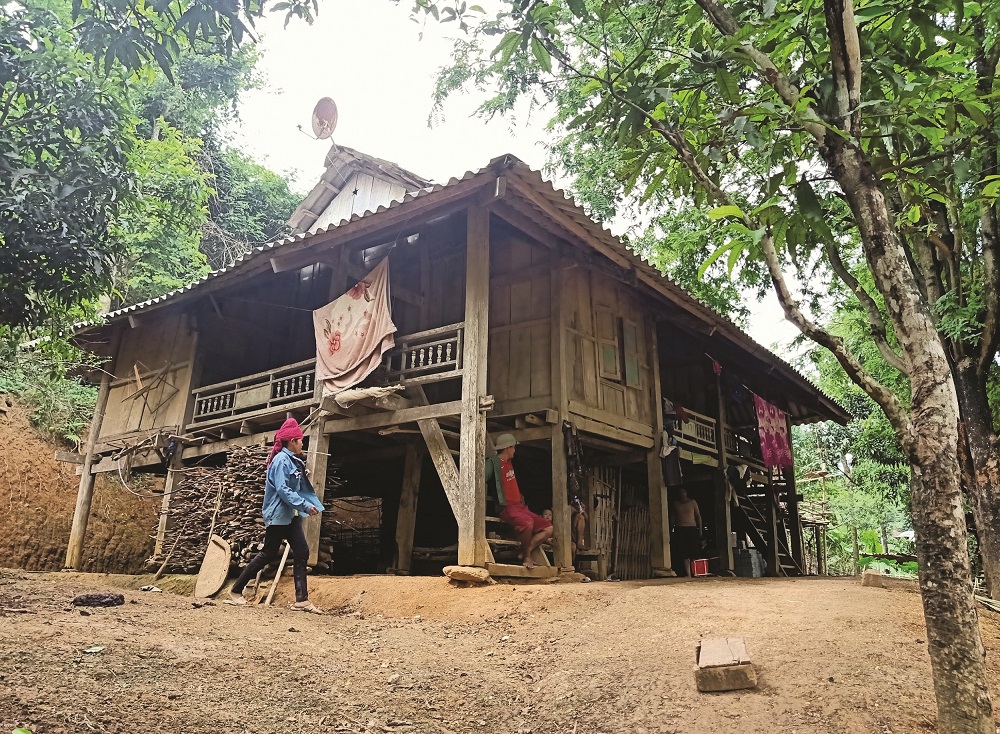
Villages consist of several households, each living in their own stilt house. The community places a strong emphasis on collective activities, with communal spaces used for gatherings, rituals, and festivals. The layout of the village and the arrangement of houses reflect the Xinh Mun’s social structure and cultural values, fostering a sense of community and shared identity.
